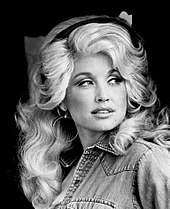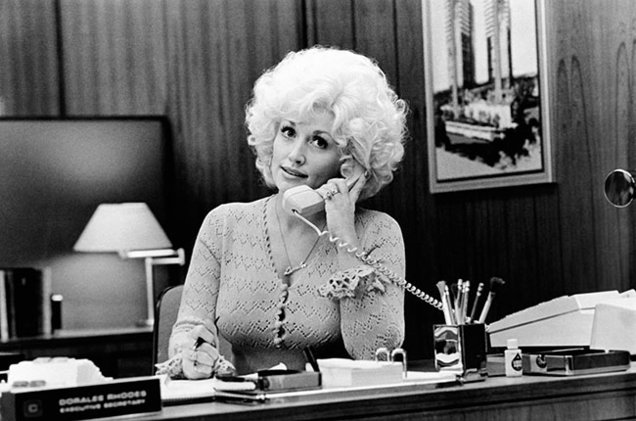
Dolly
Dolly Parton & Her Impact on Women’s and Rural Empowerment
Born in the small town of Locust Ridge, Tennessee Dolly Parton’s music and impact has always been rooted in her rural background. Despite her humble upbringing with 12 other siblings in the late 1940’s, she eventually found her way onto a TV variety show by the 60’s. Her career, both in music and television, is characterized by embrace of southern roots, and emphasis on women’s empowerment. Parton largely expressed these ideals through her own art, so naturally a great deal of this piece will be close reads of some of her more famous songs as well as her impact.
It’s also crucial to place her contributions in the context of history. While she is still producing content and philanthropic ventures today,

there is no mistake as to the intentions behind the lyrics she produced. Dolly Parton has always existed at the intersection of pride in your background and the willingness to stand up for yourself and your rights.
For example, Along with the begginings of Parton’s career, the 1960’s also saw the rise of Second Wave Feminism with the publication of The Feminine Mystique. Rooted in this movement was a call for women to not be tied down directly to the home, and engage themselves in the workforce however they may please. Partin’s music, particularly in light of this movement and later advocacy by the name leaders spoke directly to struggles of working people at the time, particularly women.
The culmination of her work has resulted in a wide breath of recognition. She is in the Country Music Hall fo Fame, has received at least a nomination from every Major American entertainment award, she is recognized by the library of congress, and more. Above all, she has demonstrated she is a giving soul, and one of the best the Volunteer State has to offer. [1]
Object #1: Coat of Many Colors
Dolly Parton, Coat of Many Colors (1979) [3]

But they didn’t understand it
And I tried to make them see
That one is only poor
Only if they choose to be
Now I know we had no money
But I was rich as I could be
In my coat of many colors
My momma made for me
Made just for me [4]
Coat of Many Colors is a folk-style song that tells a story of embracing your roots, and valuing love over money. The Coat itself, which is a jacket patched together from rags by Parton’s mother, is the symbol of that mindset. Not only is it a symbol of the means that the family had, but also the labor of love her mother puts into making something for her daughter. So, despite her being bullied for it, Parton exposed as valuable lesson: that money isn’t everything. This song serves as a song of affirmation and recognition, for many people who grew up poor in the south. People felt seen, and used this song, and others like it, to take pride in where they were from, and be empowered and reminded of the strong ties they had to their roots and their family. In her own words, “The song means so much to me personally because it is a true story from my childhood, about a little ragged coat that Mama made for me, and tried to make me feel proud of it by telling (me) the story of Joseph from the Bible” [5]. The song was also adapted as a children’s book and a made for TV film in 2015.
Object #2: Imagination Library
The Imagination Library is Dolly Parton’s premier philanthropic venture. As of now, nearly 130 million, books have been distributed since its conception (Imagination Library). The program allows for families to sign up for free books for every month for children ages 0 to 5. When asked why this is something she chose to do, she shares, “When I was growing up in the hills of East Tennessee, I knew my dreams would come true. I know there are children in your community with their own dreams. They dream of becoming a doctor or an inventor or a minister. Who knows, maybe there is a little girl whose dream is to be a writer and singer. The seeds of these dreams are often found in books and the seeds you help plant in your community can grow across the world.” This serves as just another way for her to empower others, particularly those who are growing up in the same conditions as her. This program quickly partnered with then Governor of Tennessee, Phil Bredesen, who created the Governor’s Books from Birth Foundation in partnership with the imagination library.
Object #3: Betty Friedan & The Feminine Mystique (1963)

“Lay buried, unspoken in the mind of the suburban housewife: utter boredom and lack of fulfillment. Women who had been told that they had it all—nice houses, lovely children, responsible husbands—were deadened by domesticity.” –Betty Friedan
Parton’s career started at the same time a moment of women began further mobilizing for their rights. This was largely sparked in the early 60’s by the Feminine Mystique. Among many things, it challenged the notion of the traditional American family and the stay-at-home mom. With this movement came further activism for protections in the workplace and the Equal Rights Amendment. Parton moved up the ranks as a woman in the tv and music industry, lived these experiences, and found her own ways to affirm them. Her more overt songs addressing these issues, like Working Girl and 9 to 5, came out after her earlier work and into her transition into pop music. For Dolly, this was in order to break into an audience larger than her initial fan base- where her music and message could impact even more people. While she never directly quotes Friedman, it’s clear that her work embodies similar ideals, and is presented in a digestible way for the mainstream.
Object #4: Working Girl
You’ll find her dressed according to standard uniform
Cause she must dress in comfort for the job she must perform
She has so many faces, she wears so many names
She goes so many places and she does so many things
Cause she’s a working girl
She’s a working girl, she is single and free
She’s a mother and wife and she’s proud to be a working girl
Working Girl depicts the variety of life women live on top of working in their passions. Particularly the lines, “She’s a working girl, she is single and free. She’s a mother and wife and she’s proud to be a working girl.” She clearly states that any woman can work and provide outside of the house, and challenges the paradigm of the nuclear family.
Object #5: 9 to 5
9 to 5, whoa what a way to make a livin’
Barely gettin’ by, it’s all takin’ and no givin’
They just use your mind and they never give you credit
It’s enough to drive you crazy if you let it [10]Dolly Parton, 9 to 5.
9 to 5, arguably one of Parton’s biggest songs, is another example about her emphasis on women in the workplace. This music video also came along with a feature length satirical film. The music video, embedded above, depicts many different women caught in the hustle of getting to work at whatever job they have. The lyrics, to go along with it, speak specifically to how people, often women of this time, were taken advantage of- “They just use your ind and they never give you credit.” 9 to 5 the movie depicts a boss who does exactly that, and is cruel and demeaning. While the song is often received as upbeat pop, and the movie is a satire, Parton makes a very real, very serious, claim about the abuses of women in professional environments. In an interview about the song, she says, “Its for working people […] ‘you’re just a step on the boss man’s latter.'” [11]. Her message was received loud and clear, and even seems to have inspired the Women’s empowerment group of the same name “9 to 5.” [12]
bonus: give me dolly or give me death
Work Cited
[1] Life & Career. https://dollyparton.com/about-dolly-parton
[2] Dolly Parton. Wiki Commons. https://commons.wikimedia.org/wiki/Category:Dolly_Parton#/media/File:Young-Dolly-Parton.jpg
[3] Coat of Many Colors. https://www.youtube.com/watch?v=c1zJzr-kWsI&feature=emb_title
[4] Coat of Many Colors Displayed at Country Music Hall of Fame. Wiki Commons. https://commons.wikimedia.org/wiki/Category:Dolly_Parton#/media/File:Coat_of_Many_Colors_coat.jpg
[5] Dave Paulson. “Dolly Parton’s ‘Coat of Many Colors’ is a true story.” https://www.tennessean.com/story/entertainment/music/2015/12/03/dolly-partons-coat-many-colors-true-story/76731024/
[6] Dolly Parton’s Immagination Library. PBS. https://www.youtube.com/watch?v=EWUAkeI2MD0&t=70s
[7] The Feminist Mystique. Wiki Commons. https://en.wikipedia.org/wiki/The_Feminine_Mystique
[8] https://www.billboard.com/articles/6236398/labor-day-playlist-work-songs
[9] https://www.discogs.com/Dolly-Parton-The-House-Of-The-Rising-Sun-Working-Girl/release/1841099
[10] 9 to 5 Music Video. https://www.youtube.com/watch?v=UbxUSsFXYo4&feature=emb_title
[11] Randy L. Schmidt. “Dolly on Dolly: Interviews and Encounters with Dolly Parton”
[12] https://9to5.org/about-9to5/

